Oliver Twist SummaryThe novel "Oliver Twist" by Charles Dickens was released between 1837 and 1839. The coming-of-age tale centres on Oliver Twist, a young orphan. The book, which takes place in 19th-century London, critiques the social inequities and class divisions that characterized the era. Oliver Twist is born in a workhouse, and after his mother passes away during childbirth, he is later placed in an orphanage. He is treated poorly by people around him as he grows up in poverty. He eventually manages to escape and ends up on the streets of London, where he encounters a crew of robbers headed by the infamous Fagin. 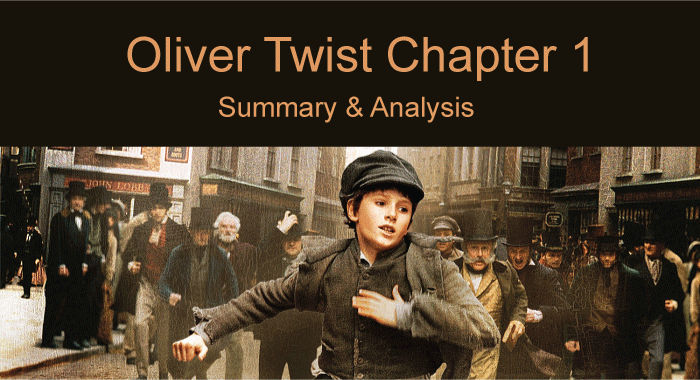
The struggle for survival and issues of crime, corruption, and poverty are all explored in the book. It also emphasizes the importance of morals, kindness, and compassion in the face of difficulty. Dickens creates a fascinating universe for his readers through vivid descriptions and likable characters. Over the years, "Oliver Twist" has been transformed into several films, plays, and musicals and has come to be regarded as a classic of English literature. As it continues to focus light on the socioeconomic problems and inequities that still exist in contemporary society, the novel is still relevant today. Oliver Twist in his YouthA workhouse is where Oliver Twist is born in a little village outside of London. His mother passes away during childbirth, and the workhouse administrators are left to raise him. Oliver's early years were characterized by adversity, abuse, and neglect. He receives meagre food and clothing supplies and is frequently chilly and hungry. Oliver is made to work in a factory when he is nine. But after being treated unfairly by his bosses, he flees. Soon after, he discovers himself homeless and alone on the streets of London. When Oliver meets Jack Dawkins, commonly known as the Artful Dodger, his life drastically changes. Oliver first meets Fagin, a thief who runs a group of teenage criminals, through the Dodger. Oliver is taken under Fagin's wing and is taught the craft of pickpocketing. Oliver is still a young boy at heart, despite his challenging circumstances. He longs for a better life and is incredibly unhappy with the life of crime he has been forced into. Oliver's early childhood demonstrates the challenges and brutal reality of poverty in 19th-century England. The Workhouse Way of LifeIn exchange for food and shelter, the poor and needy were sent to live and work in a workhouse where Oliver Twist spent his early years. The terrible environment and inhumane treatment of the prisoners made the workhouses infamous. Oliver was treated unfairly and with neglect during his time in the workhouse. He receives meagre food and clothing supplies and is frequently chilly and hungry. The workhouse's administrators treat the kids with cruelty and disregard. 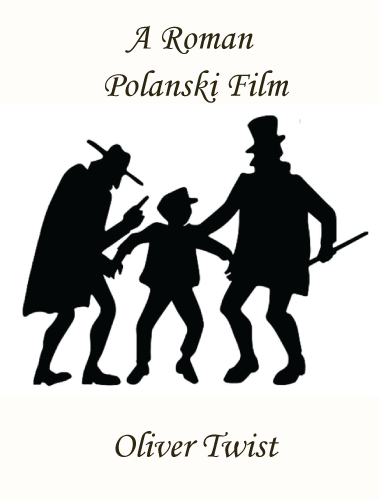
Oliver and the other kids are made to labor long hours at menial jobs like gathering oakum, which involves unraveling tattered ropes and sorting through trash. Even small transgressions, like requesting more food, result in harsh punishment for them. Oliver longs to leave the depressing and unpleasant atmosphere of the workhouse. But every time he tries to flee, he is stopped and spends years coping with the workhouse's miserable conditions. Charles Dickens uses Oliver's experiences in the workhouse to show the harsh reality of poverty and the necessity for social reform. Eventually, the workhouses were abolished in the 19th century, partly because of the attention that Dickens and other social reformers brought to them. Meeting the Gang of FaginOliver Twist encounters Jack Dawkins, commonly known as the Artful Dodger, after escaping the factory where he was forced to work. Oliver first meets Fagin, a thief who runs a group of teenage criminals, through The Dodger. Oliver is taken under Fagin's wing and is taught the craft of pickpocketing. Fagin is a crafty character that takes advantage of Oliver and other helpless kids. He carries out his criminal acts with the help of his crew of teenage thieves, and he reaps the rewards. Fagin also buys and sells stolen stuff because he is a legendary fence. The other individuals who make up Fagin's gang are a diverse group of young people who were coerced into leading criminal lives. All of them are proficient pickpockets and thieves who collaborate to prey on unsuspecting victims on London's streets. Oliver is initially reluctant to join Fagin's illegal enterprise but quickly concludes that there is no other option. He has no one to turn to and is alone and poor in the city. Charles Dickens utilizes Fagin and his gang to show the moral and social decay in 19th-century London. The children of Fagin's gang are the victims of abuse and poverty, and their dire circumstances have led them to a life of crime. First Job for OliverFor Fagin's gang, Oliver's first task is as a pickpocket. Along with the other gang members, he is dispatched onto the streets of London to commit theft from unwitting victims. Oliver is initially reluctant to commit crimes and frequently makes blunders that put him in danger. He picks up new skills quickly, though, and he soon catches up to the other gang members regarding pickpocketing ability. Oliver is tasked with robbing a man of his handkerchief one day. He is, however, discovered in the act, and an enraged mob pursues him through the streets. Mr. Brownlow, a kind-hearted guy, eventually steps in to save him and offers him a place to live. Oliver spends a brief yet impactful amount of time with Mr. Brownlow. For the first time in his life, he is shown love and charity, and he can realize that there is an alternative to the life of crime he has been compelled to lead. Oliver spends little time with Mr. Brownlow before being abducted and returned to Fagin's gang. He is compelled to continue his criminal activities but is determined to find a way out and make a fresh start for himself. The Tale's Turning PointOliver Twist's story takes a turn when it is discovered that he is not, after all, an orphan. It turned out that Agnes Fleming was the sister of a wealthy man named Mr. Brownlow. Agnes had fallen in love with Edwin Leeford, but Edwin's ruthless and cunning friends, the Monks, prevented them from getting together. After the monks persuaded Edwin to end their relationship and depart the land, Agnes was left pregnant and alone. 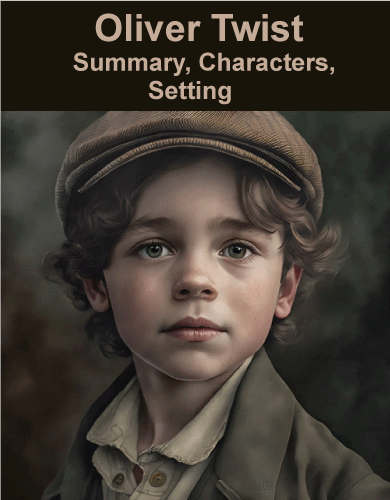
Agnes died during childbirth, and the government put the baby in the workhouse. Monks, Edwin's half-brother, is determined to protect the good inheritance of his brother, and he sets out to remove any traces of Edwin and Agnes previous relationship. Monks are desperate to get rid of Oliver once he discovers he is Edwin's son. A kind-hearted young woman named Rose Maylie, the sister of Mr. Brownlow's former ward, helps him in his endeavours. Oliver is also being sought after by the criminal underworld in the meanwhile. Fagin and his crew are desperate to apprehend Oliver and end his voice permanently because they fear he will disclose their dirty tricks and secrets. In the end, Mr. Brownlow, Rose, and some of their friends succeed in saving Oliver. Oliver is eventually able to locate a location of safety and security when Fagin and his gang are apprehended and prosecuted. Oliver's chase is a potent representation of the conflict between good and evil in the world of Oliver Twist. Despite their numerous difficulties and difficulties, the characters who work to preserve Oliver are driven by a strong sense of morality and compassion. Their efforts pay off in the end, and they can spread hope and redemption in a frequently ruthless and unfair world. Fagin's Gang's UnravellingOliver Twist's dismantling of Fagin's gang is a key storyline development. Mr. Brownlow and his pals save Oliver, and as a result, Fagin's criminal organization starts to fall apart. 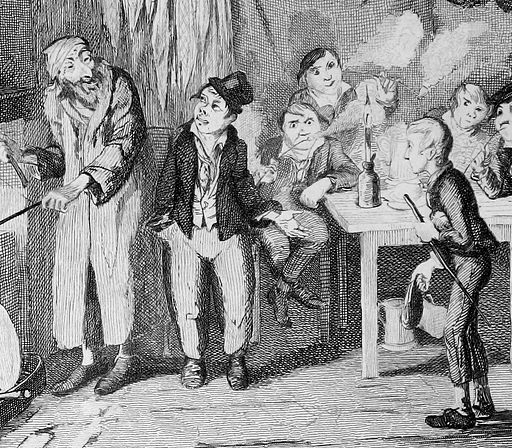
First, a young kid named Jack Dawkins, also known as the Artful Dodger, who was a member of Fagin's crew is detained and ultimately found guilty of stealing. Fagin and his gang are on high alert as a result of this incident because they think the police will target them next. Then, Bill Sikes, a nasty and violent criminal who serves as Fagin's right-hand man, develops a growing sense of instability and paranoia. He kills Nancy because he thinks she will reveal his whereabouts to the police. This violent deed is a turning point for Fagin's gang because it starts a series of events that eventually bring them down. Oliver's GenealogyOliver's family genealogy in "Oliver Twist" is made clear through several plot twists and disclosures. The top links are summarised as follows: 1. Mother of Oliver Agnes Fleming is the sister of Mr. Brownlow's former ward and the mother of Oliver. 2. Father of Oliver: Oliver's father and Agnes Fleming's potential love interest is Edwin Leeford. Monks initially trick him into fleeing the nation and ending his connection with Agnes. 3. Family Members and Donors i) Mr. Brownlow Oliver is taken in by Mr. Brownlow, a kind-hearted guy who saved Oliver from the streets. Agnes Fleming's brother, Mr. Brownlow, is Oliver's uncle. When he eventually learns Oliver's true identity, he works to defend him. ii) Rose Maylie Young woman Rose Maylie, who supports Mr. Brownlow in his efforts to save Oliver, is kind-hearted. Rose is Oliver's aunt because she is Agnes Fleming's sister. iii) Monks (Edward Leeford) Monks is Edwin Leeford's another son and Oliver's half-brother. He is the novel's main enemy, trying to hide Oliver's true identity and seize his rightful inheritance. The story eventually makes these links clear, and the revelation of Oliver's family tree further complicates and intrigues the plot. It clarifies the intentions and behaviours of different characters and is crucial to the plot's resolution. Lessons from Oliver Twist1. Poverty and Social Injustice The 19th-century English novel "Oliver Twist" portrays the harsh reality of poverty and the injustices experienced by the lower classes. Dickens exposes the enormous differences between the rich and the poor and criticizes the social and economic structures that support poverty. 2. Mortality and Redemption The novel examines the importance of morality and the possibility of salvation. Oliver maintains his virtue and goodness in the face of the corruption around him, and figures like Nancy show that moral development and change are possible. 3. Identity and Self-Discovery Oliver's quest to discover who he is and where he fits in the world is a major theme. To better understand himself and his family, he must navigate the complicated web of social expectations and learn the truth about his family. 4. Childhood and Innocence Dickens illustrates how children are vulnerable and lose their innocence in a cruel and unforgiving world. The dramatic contrast between Oliver's innocence and the moral deterioration and corruption around him emphasizes the importance of safeguarding and caring for children. 5. Deception and Hypocrisy The novel highlights the lying and hypocrisy that permeates society, especially among those in positions of authority. Characters like Fagin and Monks exploit others for their gain, and corrupt and faulty institutions like the workhouse and the court system are exposed. 6. Compassion and Social Duty "Oliver Twist" strongly emphasizes the value of compassion and social duty. Oliver is treated with love and empathy by figures like Mr. Brownlow and Rose Maylie, illustrating the possibility of change for the better via acts of compassion. 7. Class and Social Mobility The novel looks at Victorian society's rigid class system and the few prospects for social advancement. It calls for a more equal and just society while criticizing the prejudices and stereotypes connected to various socioeconomic strategies. Conclusion and Oliver Twist's LegacyFinally, "Oliver Twist" explores the harsh realities of poverty, injustice, and the quest for a better life. It is a classic book. Charles Dickens emphasizes the significance of compassion, generosity, and the power of redemption while highlighting the social injustices and moral deterioration of 19th-century London through Oliver Twist's journey. "Oliver Twist" has left a significant and enduring legacy. It is still considered a classic of English literature and one of Dickens' most significant works. Readers have been enthralled by the book for years because of its rich characters, compelling plot, and social insight. As "Oliver Twist" highlights the enduring problems of poverty, exploitation, and societal divisions, the themes it explores are still relevant today. A plea for social change and a reminder of the ongoing fight for justice and equality are both made in the book. 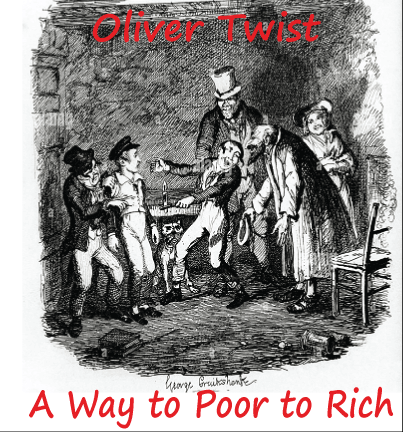
Additionally, "Oliver Twist" made a big impression on culture. Its status as a classic work of literature has been further cemented by the countless stage plays, movies, and musicals made from it. Even people who haven't read the book can recognize Oliver, Fagin, the Artful Dodger, and other well-known characters as cultural archetypes. Overall, "Oliver Twist's message and influence are best summed up by its potent storytelling, social commentary, and enduring themes that continue to speak to readers and spur conversations on the state of the human race and the goal of a decent society.
Next TopicQuest for the Theory of Everything
|
 For Videos Join Our Youtube Channel: Join Now
For Videos Join Our Youtube Channel: Join Now
Feedback
- Send your Feedback to [email protected]
Help Others, Please Share









